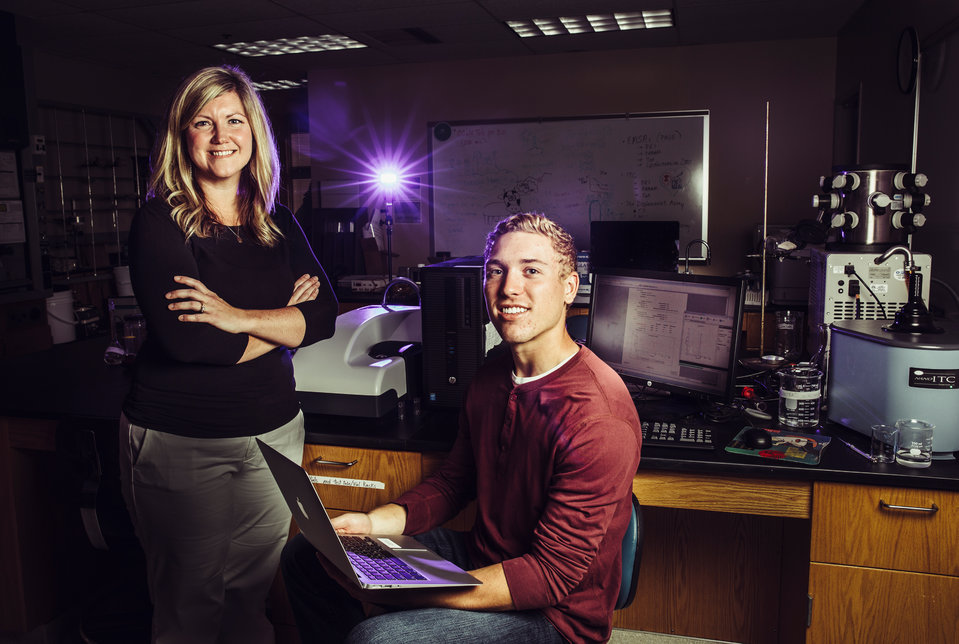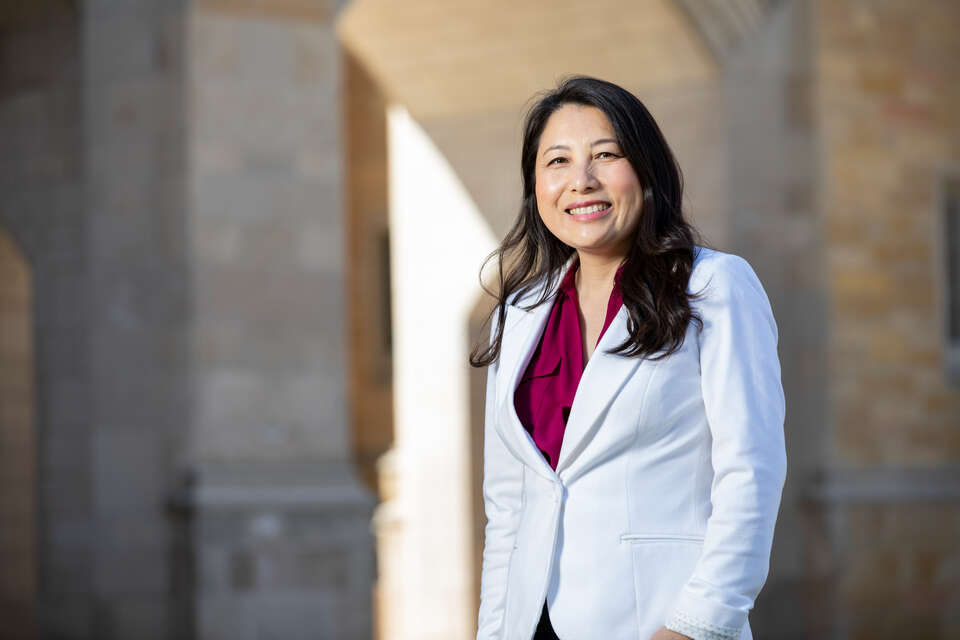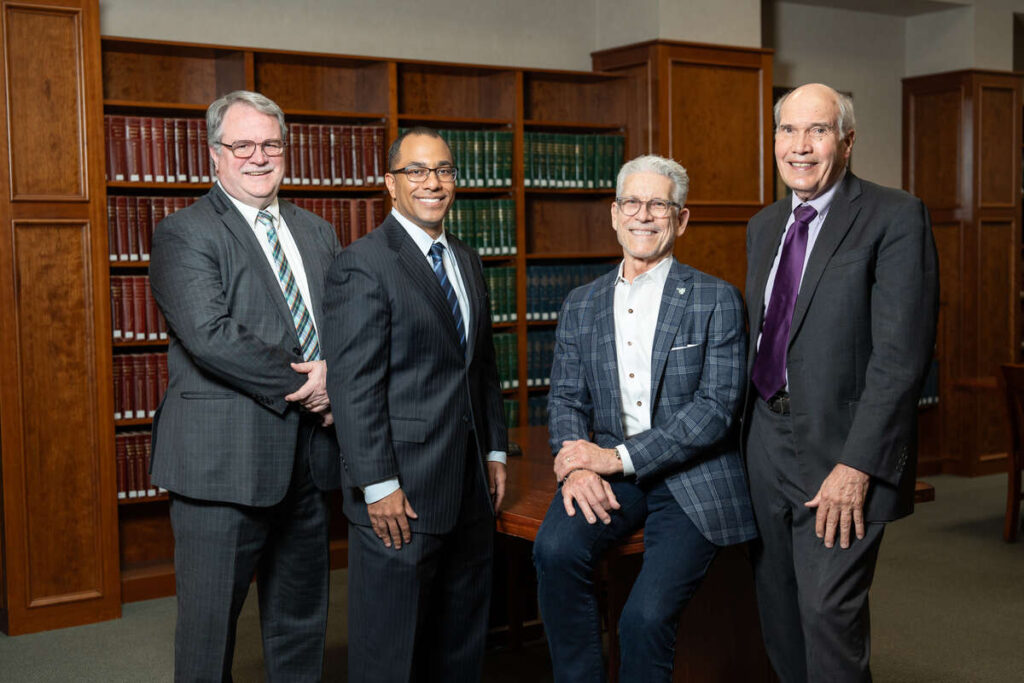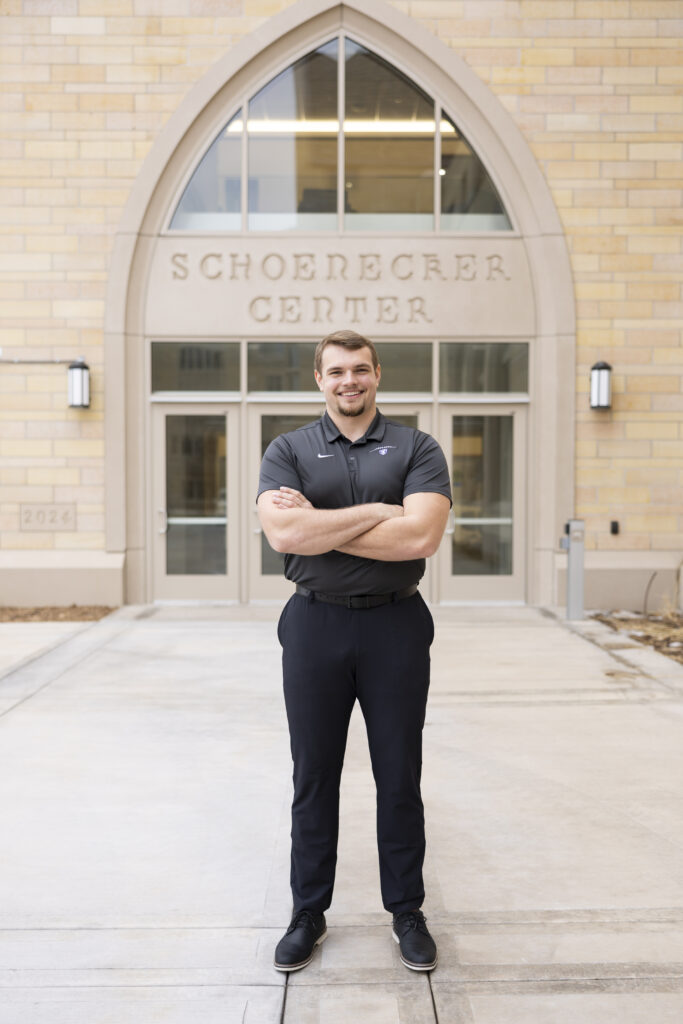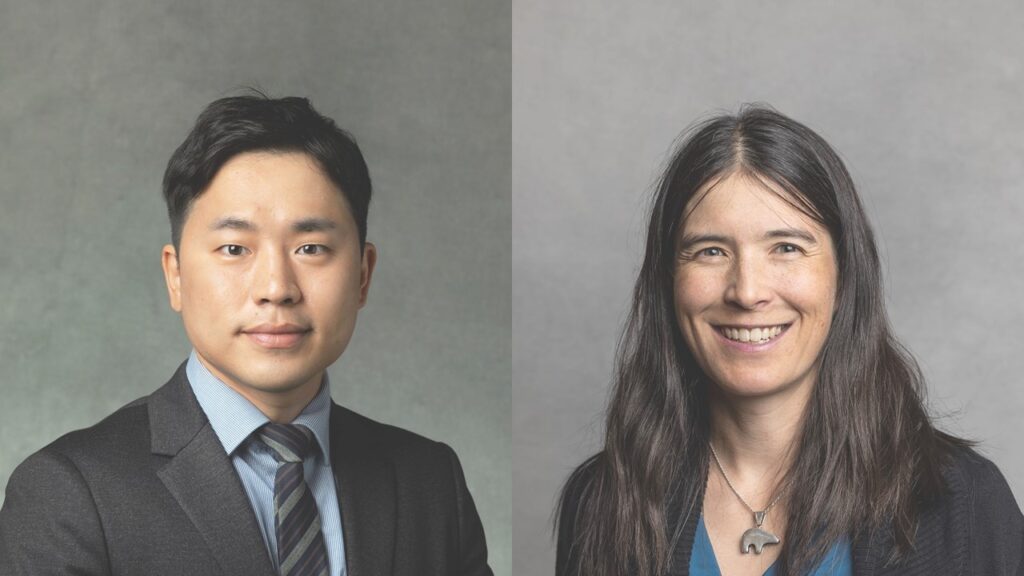“The further I got into my research at St. Thomas, the more I found myself .. realizing I couldn’t ask for much better.”
Twice a week during Jack Queenan’s senior year of high school, he journeyed from Minnetonka High School to St. Thomas. He would head to associate professor of chemistry Lisa Prevette’s lab, where he worked on his research project: creating nanoparticles that could one day be used to deliver insulin for diabetics.
That’s a project most students wouldn’t undertake until their senior year of college or even into graduate school. And Queenan embarked on this project because of his curiosity.
“I knew I wanted to do some research in college, so I wanted to use this opportunity to test the waters to see if I really liked doing research,” Queenan said.
That aspiration drove Queenan to reach out to professors across the Twin Cities to see if any would let him sit in on their labs to observe and learn. Prevette responded to the then high school junior, and they developed such a strong working relationship that Queenan officially became a Tommie this fall.
“Jack embodies what we’re looking for in a science scholar,” Prevette said. “He is bright, passionate, ambitious. He’s already proven himself to be a leader at Minnetonka, and we’re really looking for students who are going to be leaders here at St. Thomas as well. ... I have no doubt he’ll be just as successful here as he’s been so far.”
A love of chemistry research
Queenan took advantage of the many opportunities afforded to him through Minnetonka High School, including taking Advanced Placement classes and a new research lab, which helped nurture a budding interest in chemistry.
“I really like the idea that everything in the world comes down to the bare molecules and atoms that make up matter,” Queenan said. “That everything around us can be traced back to chemical components is cool for me to see.”
Intrigued by what chemistry research would look like past high school and what a career in chemistry could eventually be, Queenan contacted several Twin Cities professors. Queenan came highly recommended to Prevette.
“He was very professional and mature,” Prevette said. “He really displayed an interest in furthering his education that seemed really genuine.”
For summer 2016, Queenan shadowed one of Prevette’s upper-class students. At the end of that summer, Queenan approached Prevette and expressed an interest in launching a research project of his own. Prevette connected him with available resources and Queenan went to work, landing on the aforementioned insulin project.
His work focuses on creating nanoparticles called polymersomes, which fall apart when they’re in an acidic environment. Because they’re hollow, Queenan intends to fill them with insulin and enzymes. When the polymersomes are in an environment with high concentrations of glucose, the enzymes will react, make the environment more acidic, and the polymersome will release the insulin to be absorbed into a diabetic’s body.
In fall 2016, he wrote his proposal for the research and created the polymersome – on his first try, Prevette noted.
“We were shocked,” she said. “That doesn’t happen very often in research.”
With his high school classes complete and his diploma under his belt, Queenan spent the summer working full time. He’s focusing on testing the rates of how quickly the polymersomes dissolve based on how acidic the environment is. The next will step will be to insert the drugs and enzymes into the polymersomes.
Becoming an official Tommie
Unsurprisingly, when applying to colleges, Queenan had plenty of options.
“Jack had his pick of some very prestigious, very competitive programs; places that have very impressive labs with modern instrumentation,” Prevette said.
The level of personal attention he received from Prevette and his lab mates swayed Queenan to St. Thomas.
“I think that’s one of the great benefits of a place like St. Thomas: the personal attention from faculty,” Prevette said. “[Our relationship] is built on trust and commitment. I’m 100 percent committed to Jack’s development as a scientist, scholar and person. I’m excited that he’s here. I’m excited to see what he’s going to do next.”
“I was considering going out East to some Ivy Leagues, but I would have overlooked the school in my own backyard,” Queenan said. “The further I got into my research at St. Thomas, the more I found myself looking around and realizing I couldn’t ask for much better.”
What helped clinch the decision for Queenan was being awarded a full-tuition Science, Mathematics and Engineering Scholarship. Prevette, unsurprisingly, was the one who called Queenan and told him the good news.
“That was the sign it was meant to be,” Queenan said. “It gave me peace of mind knowing I was making the right decision.”
Prevette added that being in St. Paul gives Queenan a range of opportunities if he decides to pursue a biomedical engineering internship – one of the possible paths Queenan is examining right now.
Whatever he decides, Prevette feels confident that Queenan has the skills he needs to succeed and she is happy to be involved as a mentor on his journey.
“One of my goals for him is to make sure he has as many opportunities as possible,” she said.
For his first official year as a Tommie, Prevette has set the goal of publishing his work.
“He’s moving so quickly, and he’s having so much success in the lab right now that I think it’s feasible,” she added.
